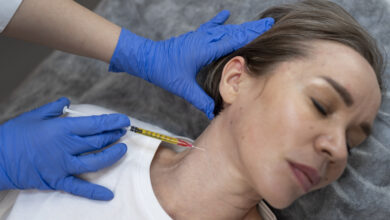Ensuring food safety in restaurants and hotels is paramount to protecting guests and maintaining a reputable establishment. Adopting comprehensive food safety practices can prevent foodborne illnesses, enhance customer trust, and comply with regulatory requirements. Here, we outline the best food safety practices every restaurant and hotel should implement.
1. Maintain Personal Hygiene
Personal hygiene is the cornerstone of food safety. All food handlers should adhere to strict hygiene standards, including:
- Handwashing: Wash hands thoroughly with soap and water before and after handling food, after using the restroom, and after any activity that could contaminate hands. Proper handwashing techniques include scrubbing for at least 20 seconds and ensuring all parts of the hands are cleaned, including under fingernails and between fingers.
- Protective Clothing: Wear clean uniforms, aprons, and hairnets. Avoid wearing jewellery that can harbour bacteria. Regularly launder work clothes and ensure they are stored in a clean environment to prevent contamination.
- Health Monitoring: Regularly monitor the health of food handlers to ensure they are free from contagious illnesses that could be transmitted through food. Implement policies that require staff to report symptoms of illnesses such as diarrhoea, vomiting, or skin infections.
2. Proper Food Safety Storage
Correct food storage practices prevent contamination and spoilage, ensuring food remains safe for consumption. Key practices include:
- Temperature Control: Store perishable items at appropriate temperatures. Refrigerators should be kept below 40°F (4°C) and freezers at 0°F (-18°C) or lower. Regularly check and record temperatures to ensure compliance.
- Labelling and Dating: Clearly label all stored food with the storage date and use-by date to ensure proper rotation and timely use. Implement the First In, First Out (FIFO) system to minimize waste and prevent using expired products.
- Separation: Store raw and cooked foods separately to avoid cross-contamination. Keep raw meats on lower shelves to prevent juices from dripping onto other foods. Use sealed containers to further protect against contamination.
3. Safe Food Preparation
During food preparation, it’s crucial to maintain high standards of cleanliness and safety. Essential practices include:
- Clean Workspaces: Regularly sanitize countertops, cutting boards, and utensils to prevent contamination. Use sanitizing solutions that are safe for food contact surfaces and follow the manufacturer’s instructions for proper use.
- Avoid Cross-Contamination: Use separate cutting boards and utensils for raw meats, vegetables, and ready-to-eat foods. Colour-coded equipment can help distinguish between different types of food handling.
- Cook to Safe Temperatures: Use food thermometers to ensure foods are cooked to safe internal temperatures (e.g., 165°F for poultry, 145°F for fish). Regularly calibrate thermometers to ensure accuracy.
4. Regular Cleaning and Sanitizing
A clean kitchen is a safe kitchen. Establish a routine for cleaning and sanitizing all areas where food is handled:
- Daily Cleaning: Clean and sanitize surfaces, equipment, and utensils at the end of each shift. Pay special attention to high-touch areas like handles, switches, and knobs.
- Deep Cleaning: Schedule regular deep cleaning of kitchen areas, including behind and under equipment. This should include cleaning vents, filters, and grease traps to prevent the buildup of contaminants.
- Pest Control: Implement effective pest control measures to keep the kitchen free from insects and rodents. Work with a professional pest control service to regularly inspect and treat the premises.
5. Employee Training
Ongoing training is vital to ensure that all staff members understand and adhere to food safety practices. Training programs should cover:
- Food Safety Basics: Educate staff on the principles of food safety, including personal hygiene, food storage, and preparation. Provide practical demonstrations and hands-on training sessions.
- Hazard Analysis and Critical Control Points (HACCP): Train staff on HACCP protocols to identify and control potential food safety hazards. Develop HACCP plans specific to your establishment’s operations and regularly review them with your team.
- Regular Updates: Provide ongoing training to inform staff about new regulations and best practices. Encourage a culture of continuous learning and improvement.
6. Implementing HACCP Plans
Hazard Analysis and Critical Control Points (HACCP) is a systematic approach to food safety that involves:
- Hazard Identification: Identify potential hazards at each stage of food production. This includes biological, chemical, and physical hazards.
- Critical Control Points: Determine critical control points where hazards can be prevented, eliminated, or reduced. For example, cooking and refrigeration are common critical control points.
- Monitoring Procedures: Establish procedures to monitor critical control points. This may involve regular temperature checks and visual inspections.
- Corrective Actions: Define corrective actions to take if a critical control point is not under control. Ensure all staff are trained on these actions and know how to implement them effectively.
7. Regular Inspections
Conduct regular inspections to ensure compliance with food safety standards. Inspections should be both internal and external:
- Internal Audits: Schedule routine internal audits to assess food safety practices and identify areas for improvement. Use checklists to ensure all aspects of food safety are covered.
- External Inspections: Cooperate with health department inspections and address any issues identified promptly. Use these inspections as an opportunity to learn and improve your processes.
8. Record Keeping
Maintain detailed records of all food safety practices, including:
- Temperature Logs: Keep logs of refrigeration and cooking temperatures. Regularly review these logs to identify any potential issues.
- Cleaning Schedules: Document cleaning and sanitizing activities. Ensure all tasks are completed as scheduled and records are up to date.
- Training Records: Maintain records of employee training sessions—track who has completed training and when refreshers are needed.
9. Supplier Verification
Ensure that all food suppliers adhere to stringent food safety standards. Verify the safety and quality of products through:
- Supplier Audits: Conduct regular audits of suppliers to ensure they comply with food safety standards.
- Certification Verification: Ensure suppliers have certifications such as Safe Quality Food (SQF) or Global Food Safety Initiative (GFSI) standards.
- Documentation: Maintain records of supplier certifications and audit results.
10. Customer Education
Educate customers about food safety to enhance their dining experience and build trust. Provide information on:
- Allergen Information: Clearly label menu items with potential allergens and offer alternatives for customers with dietary restrictions.
- Safe Handling Practices: Inform customers about safe handling practices for takeout and delivery orders, such as refrigeration and reheating instructions.
Conclusion
Adhering to these food safety practices in restaurants and hotels ensures the health and safety of guests and helps maintain a positive reputation. Additionally, you can find related training programs on food safety on Hurak.com
Implementing these practices creates a safer dining environment, enhances customer trust, and ensures compliance with food safety regulations. Remember, the cornerstone of food safety is consistent and thorough practice across all food handling and preparation levels. Regular training, monitoring, and updating of procedures are essential to maintaining high food safety standards. By prioritizing food safety, restaurants and hotels can protect their guests, reputation, and bottom line.


